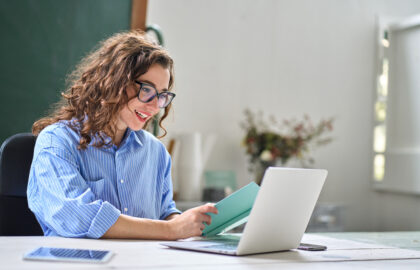Data science continues to dominate as one of the most in-demand career paths. With industries increasingly relying on data analysis, machine learning, and big data to drive decisions, the need for skilled data scientists has never been greater. If you’re looking to break into this field, understanding the best programming languages for data science is essential.
What is Data Science?
Data science is the study of information, combining statistical analysis, programming, and domain expertise to extract insights from large datasets. It plays a critical role in business decision-making, solving complex problems, and driving innovation in areas like deep learning, data visualization, and data manipulation.
Why Learn Data Science?
The demand for data scientists continues to grow, with salaries averaging $122,738 per year in the U.S. This makes the field both financially rewarding and intellectually fulfilling. Whether you’re just starting out or already have programming experience, mastering data science skills can unlock opportunities in analytics, business intelligence, artificial intelligence, and more.
According to the U.S. Bureau of Labor Statistics (BLS), organizations are increasingly relying on data scientists to develop AI models, interpret complex datasets, and integrate advanced applications into business practices. This growing dependence on data-driven decision-making is fueling strong career growth across industries.
Top Programming Languages for Data Science
Here are the most relevant programming languages for data science, updated to reflect current trends and industry needs:
1. Python
Python remains the most popular programming language for data science. Its versatility, ease of use, and extensive ecosystem of python libraries like Pandas, NumPy, Scikit-learn, and TensorFlow make it indispensable for tasks like data processing, machine learning algorithms, and automation.
- Best for: Data manipulation, data visualization, and machine learning.
- Pros: Open-source, beginner-friendly syntax, and strong community support.
- Cons: Slower execution speed compared to low-level languages like C++.

2. R
R excels in statistical computing and data visualization, making it a favorite among statisticians and researchers. Its packages like ggplot2 and dplyr are widely used for creating graphs and performing data analysis.
- Best for: Statistical analysis and large datasets.
- Pros: Open-source, extensive libraries, and ideal for scientific computing.
- Cons: Limited use outside of data science and less intuitive than Python.

3. SQL
SQL (Structured Query Language) is essential for managing relational databases and querying structured data. It’s a must-have skill for data analysts and data scientists working with data management and data processing.
- Best for: Querying and managing relational databases.
- Pros: Easy to learn and widely used across industries.
- Cons: Limited to database-related tasks.

4. Julia
Julia is gaining traction for its high-performance capabilities in numerical computing. It’s particularly popular in industries like finance and engineering, where large-scale data operations are critical.
- Best for: Scientific computing and data visualization.
- Pros: Fast execution and easy-to-learn syntax.
- Cons: Smaller community and fewer libraries compared to Python.

5. Scala
Scala, often used with Apache Spark, is ideal for handling large-scale data processing. Its compatibility with the Java Virtual Machine (JVM) and ability to manage high-volume datasets make it a valuable skill for data engineers and data scientists.
- Best for: Big data analytics and data science projects.
- Pros: Scalable and integrates well with Java.
- Cons: Steeper learning curve.

6. Java
Java remains relevant for building large-scale machine learning applications. Its robust object-oriented design and scalability make it a reliable choice for enterprise-level projects.
- Best for: Enterprise-level data analytics and backend development.
- Pros: Fast, scalable, and widely used in the industry.
- Cons: More complex syntax compared to Python.

7. MATLAB
MATLAB is widely used in academia and industries like aerospace for its powerful tools in numerical computing and data visualization. It’s particularly useful for data science projects involving linear algebra and algorithm development.
- Best for: Statistical analysis and data visualization.
- Pros: Excellent for prototyping and scientific computing.
- Cons: Expensive licensing and slower execution speed.

8. JavaScript
While primarily known for web development, JavaScript is increasingly being used for data visualization. Libraries like D3.js make it a great choice for creating interactive graphs and dashboards.
- Best for: Data visualization and web development.
- Pros: Versatile and widely used.
- Cons: Limited functionality for data science compared to Python or R.

9. SAS
SAS is a specialized tool for business intelligence and statistical analysis. It’s widely used in industries like healthcare and finance for data management and predictive analytics.
- Best for: Business intelligence and data analytics.
- Pros: Reliable and widely adopted in enterprise settings.
- Cons: Expensive and less flexible than open-source tools.

How to Choose the Right Language for Your Career Goals
When deciding which programming language to learn, consider the following:
- Your Career Path: Python is ideal for general data science, while R is better for statistical analysis. SQL is essential for data management.
- Industry Needs: If you’re targeting industries like finance or engineering, consider learning Julia or Scala.
- Your Current Skills: If you already know Java, Scala might be an easier transition.
Getting Started in Data Science
If you’re ready to dive into data science, here are some steps to get started:
- Learn the Fundamentals: Start with Python or SQL to build a strong foundation in data manipulation and data processing.
- Work on Projects: Create a portfolio showcasing your skills in data visualization, machine learning algorithms, and data analytics.
- Enroll in a Bootcamp: Programs like Flatiron School’s Data Science Bootcamp offer hands-on training and career support to help you transition into the field.
Data science is a dynamic and ever-evolving field. By mastering the right programming languages, you can position yourself for success in 2025 and beyond. Whether you’re just starting out or looking to advance your career, there’s never been a better time to invest in your data science career.




